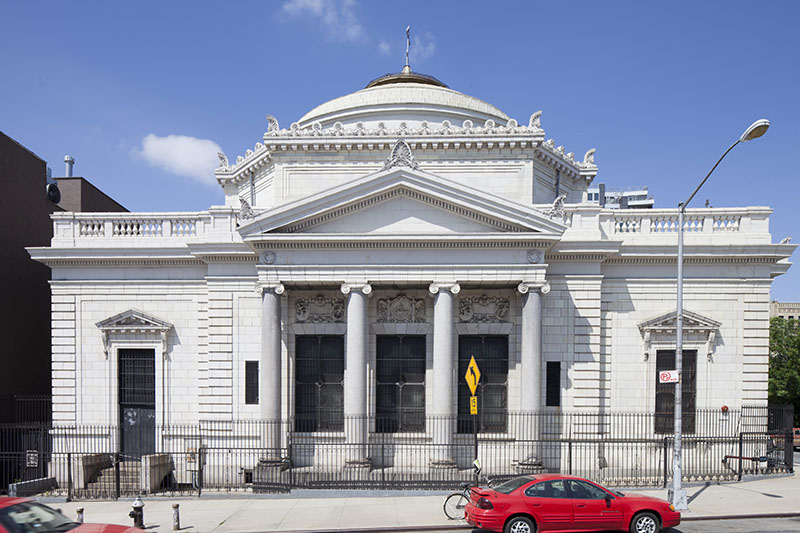
 Landmarks Preservation Commission311
Landmarks Preservation Commission311 Search all NYC.gov websites
Search all NYC.gov websites
Press Release
COMMISSION DESIGNATES WILLIAMSBURGH TRUST COMPANY BUILDING AS NYC LANDMARK
Current Holy Ukrainian Autocephalic Orthodox Church in Exile, Holy Trinity Cathedral in Brooklyn Wins Landmark Status

(New York) - The New York City Landmarks Preservation Commission today unanimously voted to designate as a landmark the Williamsburgh Trust Company Building, currently the Holy Ukrainian Autocephalic Orthodox Church in Exile, Holy Trinity Cathedral in Brooklyn. The building was designated as part of the agency's Backlog Initiative.
Located at 177 South 5th Street, the building is a monumental Neoclassical style bank building recalling Williamsburg's industrial prosperity of the 19th and early 20th centuries and the historic role of its surrounding area as a commercial and financial hub serving Williamsburg, Greenpoint, and Bushwick.
"This is one of the neighborhood's most beautiful and prominent buildings, and we are proud to designate it as an official New York City Landmark, ensuring that future generations will continue to enjoy this remarkable structure," said Commission Chair Meenakshi Srinivasan. "The building has been sensitively maintained over the years, and today we celebrate its importance to the neighborhood and city's story."
"The Williamsburgh Trust Company building is a staple in my community and testament to Williamsburg's rich, diverse and prolific architecture," said Council Member Antonio Reynoso. "Buildings of this caliber should be preserved and maintained in order to keep our history present and offer it to our future residents. I commend Chair Srinivasan for successfully implementing their backlog initiative and moving along a designation which has been stalled for years."
Designed by Helmle, Huberty & Hudswell, major Brooklyn architects who designed some of the borough's most significant early-20th-century banks and park structures, the building was completed in 1906. The site initially served as headquarters of the Williamsburgh Trust Company, which enjoyed considerable financial success following its 1899 founding. The building is an example of the luxurious "banking temples" constructed in Manhattan and Brooklyn starting in the late 19th century. Significant features include two classical porticos on its two street facades, as well as a saucer dome recalling that of the Pantheon.
The Williamsburgh Trust Company Building was originally intended to stand in isolation and has four fully developed classical facades as well as its unusual facing material of white glazed terra cotta. Its opulent design and prominent location at the entrance of the then-new Williamsburg Bridge drew admiration from the press, which described it as a "superb new edifice" that was both "extravagant and palatial."
Shortly after the building's opening, the Williamsburgh Trust Company was rocked by the Panic of 1907, and it served its last customer in 1910. Five years later, the building was acquired by the City of New York as part of a broad effort to reform the city's court system and improve Brooklyn's courthouses, and from 1916 to 1958, it served as Magistrates' Court for the Fifth District of Brooklyn. The building’s cross-shaped plan and central dome made it attractive for conversion to an Orthodox church, and in 1961, it was acquired by the Holy Ukrainian Autocephalic Orthodox Church in Exile, which renovated it to serve as its Holy Trinity Cathedral.
####
The Landmarks Preservation Commission is the mayoral agency responsible for protecting and preserving New York City's architecturally, historically and culturally significant buildings and sites. Since its creation in 1965, LPC has granted landmark status to more than 34,000 buildings and sites, including 1360 individual landmarks, 117 interior landmarks, 10 scenic landmarks, and 139 historic districts and extensions in all five boroughs. Under the City's landmarks law, considered among the most powerful in the nation, the Commission must be comprised of at least three architects, a historian, a realtor, a planner or landscape architect, as well as a representative of each borough.


